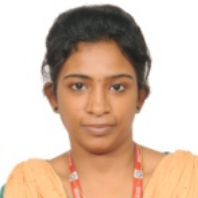International Journal of Information Technology and Computer Science (IJITCS)
IJITCS Vol. 17, No. 5, 8 Oct. 2025
Cover page and Table of Contents: PDF (size: 877KB)
Convolutional Neural Network-based Stacking Technique for Brain Tumor Classification using Red Panda Optimization
PDF (877KB), PP.52-67
Views: 0 Downloads: 0
Author(s)
Index Terms
Big Data, Mutual Information, Feature Selection, Convolutional Neural Network, Brain Tumor Classification
Abstract
In the healthcare field, the detection of critical diseases such as brain tumors is essential. A technique like traditional support vector machine has been commonly used for brain tumor classification. However, Processing and detecting brain tumors requires achieving high accuracy with shorter detection time and reduced complexity. To accomplish this, efficient feature selection is necessary, which can be based on various factors. A convolutional neural network-based stacking technique is introduced for effective brain tumor classification and prediction using Red Panda optimization. By efficiently extracting spatial data from medical images, a convolutional neural network is used in stacking to enhance thecapacity of our model for abnormality detection and classification in the prediction of brain tumors. Red panda optimization is a biologically inspired stochastic optimization algorithm used for the effective selection of significant features. This Technique improves the prediction accuracy in a shorter period and reduces the complexity by selecting significant features for a huge amount of data by employing effective optimization. This technique is tested on multiple standard datasets to assess our model’s performance. Our technique is compared to other optimization models such as Mutual information-based optimization and traditional particle swarm optimization for further validation. Our model showed an improvement in detection accuracy to 98% with a better reduction in detection time and complexity.
Cite This Paper
Blessa Binolin Pepsi M., Anandhi H., Karunyaharini S., Visali N., "Convolutional Neural Network-based Stacking Technique for Brain Tumor Classification using Red Panda Optimization", International Journal of Information Technology and Computer Science(IJITCS), Vol.17, No.5, pp.52-67, 2025. DOI:10.5815/ijitcs.2025.05.05
Reference
[1]D. Wu, L. Zhu, Q. Lu, and S. Sakr.“HDM: A composable framework for big data processing,” IEEE Transactions Big Data, vol. 4, no. 2, pp. 150–163, Jun. 2018.
[2]X. Wang, L. T. Yang, H. Liu, and M. J. Deen IEEE Transactions Big Data,"X. Wang, L. T. Yang, H. Liu, and M.J.Deen.“A big data-as-a-service framework: State-of-the-art and perspectives,” vol. 4, no. 3, pp. 325–340, Sep. 2018.
[3]H. Mohsen, E. S. A. El-Dahshan, E. S. M. El-Horbaty, and A. B.MSalem. “Classification using deep learning neural networks for brain tumors,” Future Comput. Inform. J., vol. 3, no. 1, pp. 68–71, 2018.
[4]A. Arnaud, F. Forbes, N. Coquery, N. Collomb, B. Lemasson, and E. L. Barbier “Fully automatic lesion localization and characterization: Application to brain tumors using multiparametric quantitative MRI data,” IEEE Transactions. Med. Imag., vol. 37, no. 7, pp. 1678–1689, Jul. 2018.
[5]J. Amin, M. Sharif, M. Yasmin, and S. L. Fernandes."Big data analysis for brain tumor detection: Deep convolutional neural networks," Future Gener. Comput. Syst., vol. 87, pp. 290–297, 2018,
[6]A. B. Salem, H. Mohsen, E. S. A. El-Dahshan, and E. S. M. El-Horbaty. "Deep learning neural networks for brain tumor classification," Future Comput. Inform. J., vol. 3, no. 1, pp. 68–71, 2018.
[7]M. Chen, Y. Hao, K. Hwang, L. Wang, and L. Wang."Disease prediction by machine learning over big data from healthcare communities,"IEEE Access, vol. 5, pp. 8869–8879, 2017.
[8]J. R. Koza and J. R. Koza, MA, Cambridge, USA: MIT Press, 1992."Genetic Programming: On the Programming of Computers by Means of Natural Selection".
[9]Kennedy, R.C. Eberhart,1995 “Particle swarm optimization”. IEEE International Conference on Neural Networks, IEEE Service Center, Piscataway, NJ, (1995) 1942-1948.
[10]Eslam Mohsen Hassib, Ali Ibrahim El-Desouky, El-Sayed M. El-Kenawy, Sally M. El-Ghamrawy."An Imbalanced Big Data Mining Framework for Improving Optimization Algorithms Performance" IEEE Access, vol.7, 2019.2955983.
[11]I.D.DinovGigascience. “Methodological challenges and analytic opportunities for modelling and interpreting big healthcare data,”vol. 5, no. 1, Dec. 2016 s13742-016.
[12]S. Pereira, A. Pinto, V. Alves, and C. A. Silva “Brain tumor segmentation using convolutional neural networks in MRI images,”IEEE Transactions Med. Imag., vol. 35, no. 5, pp. 1240–1251, May 2016.
[13]T.Ramakrishnan, and B. Sankaragomathi. “A professional estimate on the computed tomography brain tumor images using SVM-SMO for classification and MRG-GWO for segmentation,” Pattern Recognit.Lett vol. 94, pp. 163–171, 2017.
[14]J. Naik, and S. Patel, Int. J. Comput. Sci. Netw. Secur.,“Tumor detection and classification using decision tree in brain MRI,” vol. 14, no. 6, p. 87,2014.
[15]Y. Zhang et al., Multimedia Tools Appl., “Smart pathological brain detection by synthetic minority oversampling technique, extreme learning machine, and Jaya algorithm,” vol. 77, pp. 22629–22648, 2018.
[16]Manikandan Ramachandran, Rizwan Patan, Ambeshwar Kumar, Soheil Hosseini, and Amir H. Gandomi."Mutual Informative MapReduce and Minimum Quadrangle Classification for Brain Tumor Big Data" IEEE Transactions VOL. 70, NO. 8, AUGUST 2023.
[17]"Red Panda Optimization Algorithm: An Effective Bio-Inspired Metaheuristic Algorithm for Solving Engineering Optimization Problems" Hadi Givi, Mohammad Dehghani, and Stepan Hubalovsky IEEE Access Vol 11, 2023.3283422.
[18]S. U. Aswathy, G. G. Devadhas, and S. S. Kumar. “Brain tumor detection and segmentation using a wrapper based genetic algorithm foroptimized feature set,” Cluster Comput., vol. 22, pp. 13369–13380, 2020.
[19]S. Ali, S. S. Tirumala and A. Sarrafzadeh, "Ensemble learning methods for decision making: Status and future prospects," 2015 International Conference on Machine Learning and Cybernetics (ICMLC), Guangzhou, China, 2015, pp. 211-216, doi: 10.1109/ICMLC.2015.7340924.
[20]A. Paul, and S. Rho “Probabilistic model for M2M in IoT networking and communication,” Telecommun. Syst., vol. 62, no. 1, pp. 59–66, 2016.
[21]R. Chauhan, K. K. Ghanshala and R. C. Joshi, "Convolutional Neural Network (CNN) for Image Detection and Recognition," 2018 First International Conference on Secure Cyber Computing and Communication (ICSCCC), Jalandhar, India, 2018, pp. 278-282, doi: 10.1109/ICSCCC.2018.8703316.
[22]A. Lakshmi, T. Arivoli, andM. P. Rajasekaran “A novelM-ACA-Based tumor segmentation and DAPP feature extraction with PPCSO-PKC-Based MRIclassification,” Arabian J. for Sci. Eng., vol. 43, pp. 7095–7111, 2018.
[23]R. Roth et al., Improving computer-aided detection using convolutional neural networks and random view aggregation IEEE Transactions Med. Imag., vol. 35, no. 5, pp. 1170–1181, May 2016.
[24]P. Trojovský, M. Dehghani, E. Trojovská, and E. Milkova,"Language education optimization: A new human-based metaheuristic algorithm for solving optimization problems, "Comput. Model. Eng. Sci., vol. 136, no. 2, pp. 1527–1573, 2023
[25]J. Nijboer and E. S. Dierenfeld, Amsterdam, The Netherlands: Elsevier, "Red panda nutrition: How to feed a vegetarian carnivore," in Red Panda2022, pp. 225–238.
[26]M.Cavazzuti, "Deterministic optimization, "Optimization Methods: From Theory to Design Scientific and Technological Aspects in Mechanics. Berlin, Germany: Springer, 2013, pp. 77–102.
[27]S. Mirjalili, S. M. Mirjalili, and A. Lewis, "Grey wolf optimizer," Adv. Eng. Softw., vol. 69, pp. 46–61, Mar. 2014.
[28]S. Mirjalili, A. H. Gandomi, S. Z. Mirjalili, S. Saremi, H. Faris, and S. M. Mirjalili, "Salp swarm algorithm: A bio-inspired optimizer for engineering design problems," Adv. Eng. Softw., vol. 114, pp. 163–191, Dec. 2017.
[29]Eberhart and Yuhui Shi,"Particle swarm optimization: developments, applications and resources," Proceedings of the 2001 Congress on Evolutionary Computation (IEEE Cat. No.01TH8546), Seoul, Korea (South), 2001, pp. 81-86 vol. 1, doi: 10.1109/CEC.2001.934374.
[30]R. Eberhart, Y. Shi,"Comparing inertia weights and constriction factors in particle swarm optimisation", Proceedings of the 2000 Congress on Evol. Comput. (2000) 84–88.
[31]T. M. Shami, A. A. El-Saleh, M. Alswaitti, Q. Al-Tashi,M.A. Summakieh and S.Mirjalili", Particle Swarm Optimization: A Comprehensive Survey," in IEEE Access, vol. 10, pp. 10031-10061,2022, doi: 10.1109/ACCESS.2022.3142859.
[32]A. Al-Ani and M. Deriche,"Feature selection using a mutual information-based measure," 2002 International Conference on Pattern Recognition, Quebec City, QC, Canada, 2002, pp. 82-85 vol.4, doi: 10.1109/ICPR.2002.1047405.
[33]S. Liu and M.Motani, "Exploring Unique Relevance for Mutual Information based Feature Selection," 2020 IEEE International Symposium on Information Theory (ISIT), Los Angeles, CA, USA, 2020, pp. 2747-2752, doi: 10.1109/ISIT44484.2020.9174304.
[34]J. Amin, M. Sharif, M. Yasmin, and S. L. Fernandes “A distinctive approach in brain tumor detection and classification using MRI,” Pattern Recognit. Lett., vol. 139, pp. 118–127, 2020
[35]C. W. Lau, C. Nair and D. Ng,"A Mutual Information Inequality and Some Applications," in IEEE Transactions on Information Theory, vol. 69, no. 10, pp. 6210-6220, Oct. 2023, doi: 10.1109/TIT.2023.3285928.
[36]W. Alghamdi and F. P. Calmon,2019 "Mutual Information as a Function of Moments," IEEE International Symposium on Information Theory (ISIT), Paris, France, 2019, pp. 3122-3126, doi: 10.1109/ISIT.2019.8849815.
[37]R. Battiti,"Using mutual information for selecting features in supervised neural net learning,"in IEEE Transactions on Neural Networks, vol. 5, no. 4, pp. 537-550, July 1994, doi: 10.1109/72.298224.
[38]M.A.Sulaiman and J. Labadin,"Feature selection based on mutual information," 2015 9th International Conference on IT in Asia (CITA), Sarawak, Malaysia, 2015, pp. 1-6, doi: 10.1109/CITA.2015.7349827.
[39]A. Verma and S. Mehta, "A comparative study of ensemble learning methods for classification in bioinformatics," 2017 7th International Conference on Cloud Computing, Data Science & Engineering - Confluence, Noida, India, 2017, pp. 155-158, doi: 10.1109/CONFLUENCE.2017.7943141.
[40]I. D. Mienye and Y. Sun, "A Survey of Ensemble Learning: Concepts, Algorithms, Applications, and Prospects," in IEEE Access, vol. 10, pp. 99129-99149, 2022, doi: 10.1109/ACCESS.2022.3207287.
[41]R. Gupta, "Stacking Ensemble of Convolutional Neural Networks for Sign Language Recognition," 2022 International Conference on Computer Communication and Informatics (ICCCI), Coimbatore, India, 2022, pp. 1-5, doi: 10.1109/ICCCI54379.2022.9741017.
[42]Chauhan, Rahul & Ghanshala, Kamal & Joshi, R.. (2018). Convolutional Neural Network (CNN) for Image Detection and Recognition. 278-282. 10.1109/ICSCCC.2018.8703316.
[43]O. Korzh, G. Cook, T. Andersen and E. Serra, "Stacking approach for CNN transfer learning ensemble for remote sensing imagery," 2017 Intelligent Systems Conference (IntelliSys), London, UK, 2017, pp. 599-608, doi: 10.1109/IntelliSys.2017.8324356.
[44]P. Choudhary and P. Pathak, "A Review of Convolution Neural Network Used in Various Applications," 2021 5th International Conference on Information Systems and Computer Networks (ISCON), Mathura, India, 2021, pp. 1-5, doi: 10.1109/ISCON52037.2021.9702315.
[45]N.V. Shree, and T. N. R Kumar. “Identification and classification of brain tumor MRI images with feature extraction using DWT and probabilistic neural network,”Brain Inform., vol. 5, no. 1, pp. 23–30, 2018
[46]Kaggle machine learning repository. Available: https://www.kaggle.com/datasets/masoumehsiar/siardataset
[47]Kaggle machine learning repository. Available: https://www.kaggle.com/datasets/ahmedhamada0/brain-tumor-detection
[48]Kaggle machine learning repository. Available: https://www.kaggle.com/datasets/jakeshbohaju/brain-tumor
[49]J. Amin, M. Sharif, M. Raza, T. Saba, and M. A. Anjum “Brain tumor detection using statistical and machine learning method,” Comput. Methods Programs Biomed., vol. 177, pp. 69–79, 2019.



